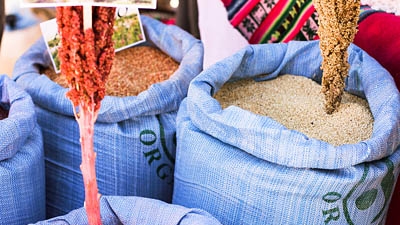Astronauts eat it, as do those of us with our feet on the ground. That is because consuming quinoa, the so-called Super food - with a capital S - makes all the nutritional sense in the world.
According to the FAO, quinoa is the grain crop with the most nutrients per 100 calories. It has no cholesterol and does not cause allergies. It is so nutritious that NASA feeds it to crews on long space missions. It is a natural, healthy and easily-grown food.
Sales figures tell a similar story: over the past decade, the demand for quinoa has increased 18 times, more than any other food product. Prices have risen sevenfold over the past several months, reaching US$ 7,000 per ton in Bolivia, for example.
But the quinoa boom has created a paradox that could affect both consumers and producers, according to experts.
On the one hand, it is becoming a luxury food for consumers in producing countries. On the other, it is stimulating a growing commercial appetite among nations that have agricultural and technological advantages over Andean growers.
Peru and Bolivia are the world’s leading quinoa producers, each producing approximately half of the total supply. However, several countries with agricultural potential have jumped on the quinoa bandwagon. These include the United States, Canada, China, Denmark, India and Australia.
Researchers in the United States have already begun to experiment with seed hybrids to adapt the crop to North American field conditions. Quinoa is a highly adaptable crop. It can be grown from sea level to an altitude of four thousand meters and can withstand temperatures between -8 and 38 degrees Celsius.
Quinoa’s global success is not necessarily good news for local consumers, who could lose a key staple of their diets and be forced to consume cheaper, less nutritious products. Complaints about the high price of quinoa are frequently heard on the streets of La Paz. Ten years ago, a kilo cost US$ 0.16; today it costs 10 times more, or approximately US$ 1.15.
Some Bolivian farmers say they use income from quinoa sales to buy noodles, rice and canned goods, which are easier to prepare and consume. Currently, per capita consumption of wheat in Bolivia is 71 kilos per year whereas quinoa consumption stands at around 1.2 kilos annually.
This contrasts with consumption in industrialized countries, where quinoa has become ubiquitous. Restaurant menus in Europe and the United States often list at least one quinoa dish.

